Colorado has much more than a few beautiful mountains and incredible ski resorts. As I’ve grown to know my home state over the years, I’ve learned a lot about the characteristics of the many areas within Colorado and what they bring to the table. And that’s why you’ve come to the right place for information about a Colorado road trip.
You might be familiar with a few of the major cities. Denver, of course, is a pretty important destination. But what about Boulder, Fort Collins, Breckenridge, Telluride, Crested Butte, and all the rest of the wonderful places? This post will help you understand the character behind these awesome towns.


But Colorado’s true gems aren’t the cities and towns. You’ll find the most impressive parts of this state in the stunning scenery of the Rocky Mountains.
Did you know that Colorado has 58 mountains over 14,000 feet high, more than any other state in the United States? While both Alaska and California have higher peaks, nowhere in the US has the number of tall mountains that Colorado does.
It’s not easy to decide which areas to visit during your Colorado road trip. And I think it’s wrong to say that one route is best for everyone. But by the end of this post, you’ll have a better understanding of the different areas in Colorado.
We’ll give you a few ideas for your Colorado road trip itinerary, but use the information here to pick and choose the parts you want to visit!


The Main Artery of Colorado: I-70 from Denver to Grand Junction
You can’t talk about Colorado road trips without discussing the most important and busiest highway in the state: I-70. This highway cuts all the way across the state from east to west, and goes through a handful of the major cities, past a lot of the best recreational spots, and offers a quick route through the state.
If you want to make a quick road trip through Colorado, sticking to I-70 and the many attractions near it might be your best option. If you approach Colorado from the east, Denver is the first major city you’ll cross.
As the state’s largest city and capital, Denver is worth a stop. The River North district is the new, hip part of town with many breweries and restaurants. But you’ll also be happy you stopped in areas like Sloan’s Lake, Larimer Square, Union Station, or Highlands.
It’s hard to identify one place in particular that you should stop at in Denver, but there are plenty of great restaurants, bars, breweries, sporting events, theaters, concert venues, and more. But this post isn’t about the ultimate trip to Denver, so let’s move on with our Colorado road trip ideas.


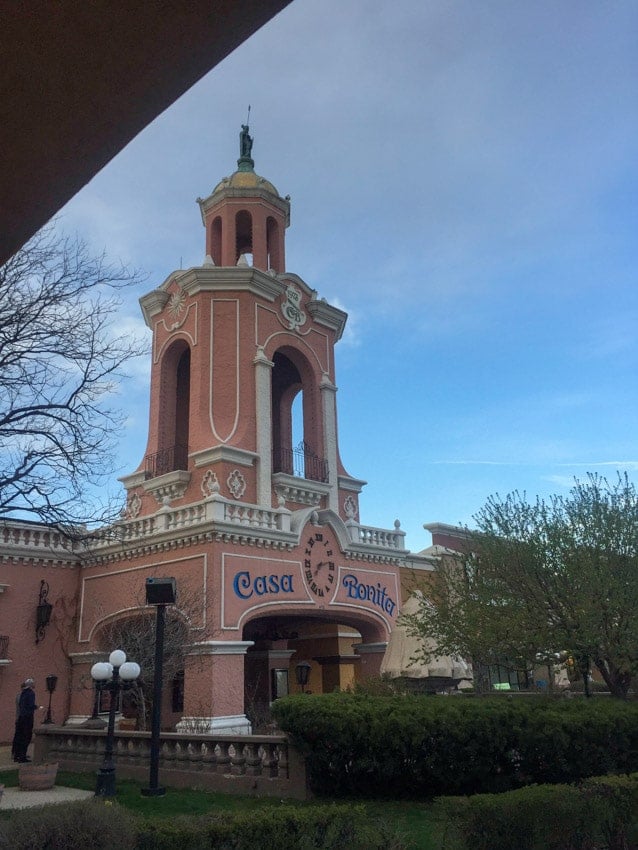
Near Denver
Keep driving west on I-70 and the mountains will be in full view. A beautiful view at that. But before you start the fairly intense drive rising high into the majestic mountains, you should consider stopping at one of the towns for outdoor adventure in the foothills or front range.
Boulder should really be on your Colorado road trip itinerary. I’m biased since my alma mater is located here (University of Colorado, with a stunning campus in town), but Boulder is well known as being an incredible place to live, especially if you enjoy outdoor recreation.

The town is tucked right up against massive rock formations, known as the Flatirons, which poke directly out of the flat prairie and shoot into the sky, signifying the start of the Rocky Mountains. There are plenty of hiking trails very close to town and a lovely scenic drive up Flagstaff road (stop at Flagstaff House Restaurant for upscale dining with a view).
Rocky Mountain National Park is just northwest of Boulder – making the Denver, Boulder, RMNP drive a good bet for those heading west. You can simply go for a drive, find a great hiking trail, or camp overnight (plan 6-months ahead to get a reservation).
If Boulder seems too far away, a quick stop in Golden or Red Rocks can be decent options that are closer to I-70. Golden is not as lively of a town and the foothills nearby aren’t as magnificent, but Golden has a nice central area and it’s the home of Coors Brewery. Red Rocks is always worthwhile for nearly any show you can see there.
Would you rather camp just outside of Denver? Then consider going a bit southwest toward the small town of Deckers. While there isn’t much for city life in this area, there are plenty of camping locations. Beware that this is often a busy area during peak season and can be filled with dirt bikes, ATVs, and generally a bit noisier than I prefer.
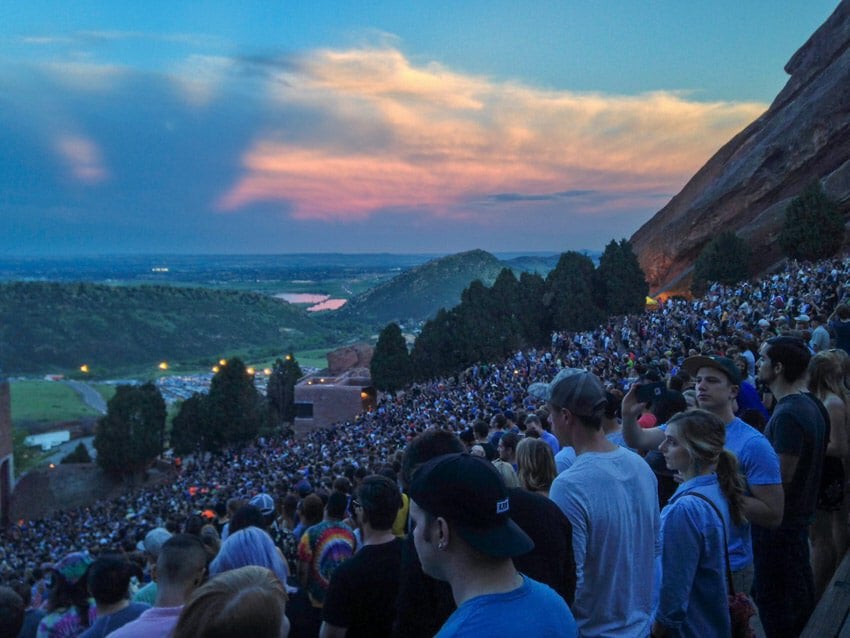

Up, Up, Up We Go!
So you’ve stopped in Denver and seen what you wanted to see in the surrounding area. Up next – literally – is tackling the climb up I-70 into the mountains. It’s a good idea to check your brakes, tire pressure, and oil level before this part of the drive. You’ll be rising over 5,000 feet in elevation, going from Denver’s 5,280 feet to Eisenhower Tunnel at 11,158 feet.
An important tip for those not used to driving in the mountains: do not ride your brakes when going downhill. They can overheat and fail. When you need to slow down as you descend a steep hill, press the brakes for a few seconds and then let off of them, giving them a moment to cool off. Repeat as needed.
As you climb I-70 going west from Denver, the first major mountain town you’ll pass is Idaho Springs. It’s good for a quick stop and bite to eat somewhere along Miner Street. Beau Jo’s Pizza (unique mountain pie pizza) and Tommy Knocker Brewery (excellent beer and cream soda) are the two long-time staples. Two Brothers is a great little deli if you want to have a quick stop. Westbound and Down is a relatively new brewery that’s become quite popular.

If you’d like to summit your first 14’er (14,000 foot high mountain), then exit I-70 at Idaho Springs and hop on the Mt. Evans Scenic Byway. You can drive straight to the top in about two hours!
North of Idaho Springs is Blackhawk, best known for its casinos. Good stop for those who like to gamble, but don’t expect Vegas-style entertainment.
As you head west from Idaho Spring, you’ll pass an exit for Berthod Pass, which leads to Winter Park and Granby. Winter Park ski resort and mountain biking paradise is tucked away at the base of Berthod Pass and has plenty of camping options nearby.
If you are considering camping here, then read our post on the best campsites near Winter Park.
North of Winter Park is the town of Granby, Lake Granby, and Grand Lake. While Colorado isn’t the ultimate boating destination, this is about as good as it gets in this state. And the surrounding area has plenty of hotels and vacation rentals, ready to go for your next Colorado road trip stop.

Summit County – The Heart of the Colorado Mountains
After driving farther west, you’ll hit the highest point in the entire interstate highway system on I-70 at Eisenhower Tunnel. The tunnel is about 1.7 miles long and cuts directly under the Continental Divide. I dare you to try to hold your breath the whole way (as long as you’re not driving).
After passing through the tunnel, you’ll face a steep decent into Summit County. Many people might argue over where the heart of Colorado’s mountains are at, but a large group would agree that Summit County is it.
Full of major ski resorts like Breckenridge and Keystone, along with the towns of Silverthorne, Dillon, Frisco, and Breckenridge, there’s plenty to do in this awesome little area. Dillon Reservoir (often called Lake Dillon) can be seen from the highway and has plenty of options for on-the-water fun.
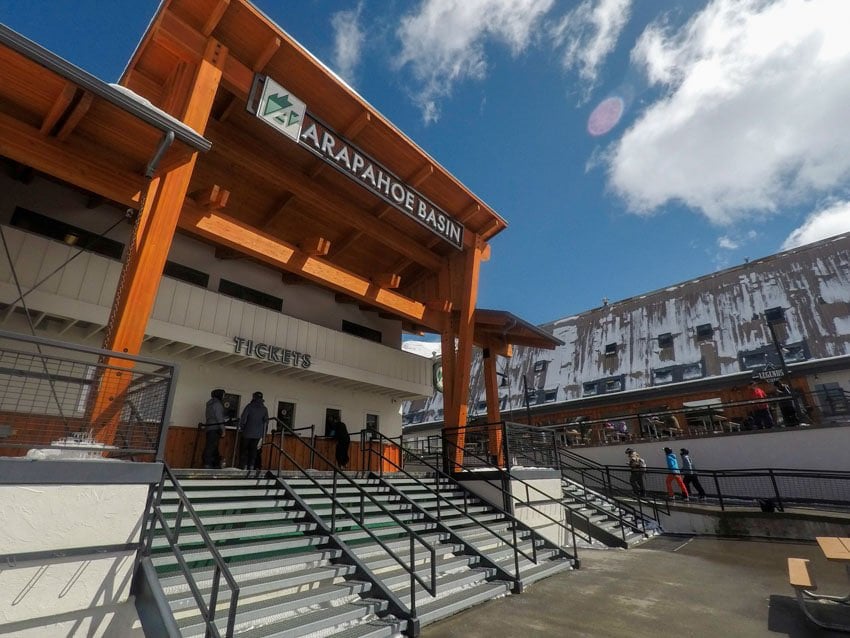
You can make a quick pitstop right off of the highway in Silverthorne. A large outlet mall, the damn brewery (Dillon Dam Brewery, actually), and Dillon Reservoir are the major highlights. But there are a variety of other food options.
If you have a bit more time, head off of I-70, pass through Frisco (a cute little town), and visit Breckenridge. It’s an awesome and quirky little town, with great pizza places, plenty of boutique shopping, and a lovely area to walk around in. The nightlife is pretty decent too, for a mountain town. Oh yeah, it’s also where you can find a good amount of professional and semi-professional skiers and snowboarders.
Keystone is a large ski resort, with a full village around its base and plenty of activities to do. It’s one of the most family-friendly ski resorts in Colorado, but it’s a great resort with advance terrain too.
If you’d like to venture away from the towns and into the wilderness, then perhaps going north into the Arapaho and Rosevelt National Forest might do the trick. Or camp somewhere along the side of Green Mountain Reservoir.

Eagle County: Ever Hear of a Little Place Called Vail?
After passing through Summit County, you’ll hit another bit of treacherous highway on I-70: Vail Pass. During big winter storms, it is not unusual for this stretch of I-70 to close down. Just Google “vail pass accidents” for more information on why.
Obviously, this pass leads from Summit County to Vail, one of the world’s premier ski destinations. If you are a skier and haven’t spent a few days getting lost on Vail’s immense terrain, you’re missing out. Remember to plan ahead for a trip to Vail though; places fill up quickly and ski passes (along with parking, eating, and just about everything else) are quite expensive in Vail.
There’s plenty to do in Vail during the summer as well. The central area of the town is called Vail Village. It has great restaurants and bars, shopping of all types, and the vibe in town is awesome.

Grand Junction: The Far Western Slope Near I-70
Colorado’s Western Slope is a huge area, technically covering the entire western part of Colorado that falls west of the Continental Divide. But when we’re talking about I-70 areas to the west of Vail, this usually means Grand Junction and Glenwood Springs.
Glenwood Springs can be a great stop, but the major forest fires in 2020 might impact a lot of the best parts, including Hanging Lake. You can also find Glenwood Caverns Adventure Park there, which can be an adrenaline-filled way to spend an afternoon.
Keep going west, especially if you visit late summer or early fall during peach season. The town of Palisade is the place to go for some of the juicy fruit. As Colorado has a difficult time getting reeeeally good fruit, the Palisade peaches are a highlight of the season for many Coloradans (and oddly enough, a source of state pride). There are also quite a few vineyards and wineries in the area.
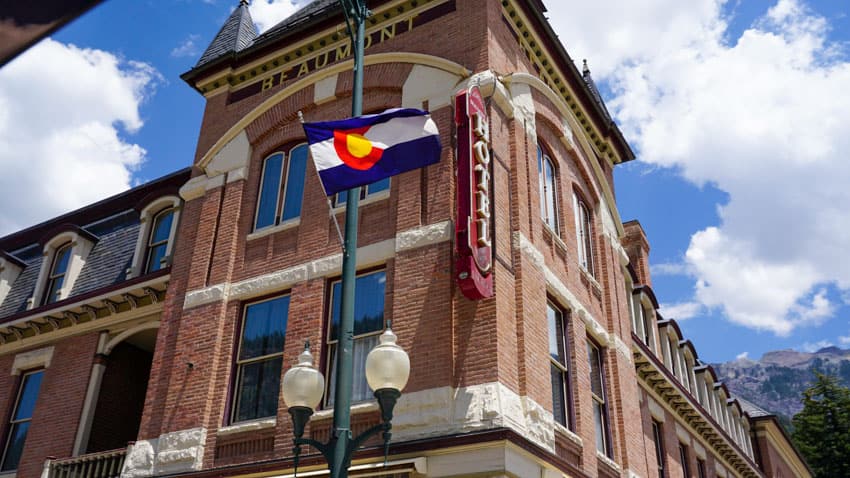
Just past Palisade you’ll hit Grand Junction and Fruita. While not the most exciting towns, they’re a good place to stop to refuel before continuing west into Utah. If you want to see something spectacular in the area, then take the 2 hour drive through the Colorado National Monument. While it’s definitely not the same scale, some call it Colorado’s Grand Canyon.
And that does it for the I-70 corridor through Colorado. It’s one of the easiest and most popular routes with access to a ton of Colorado’s best mountain areas.
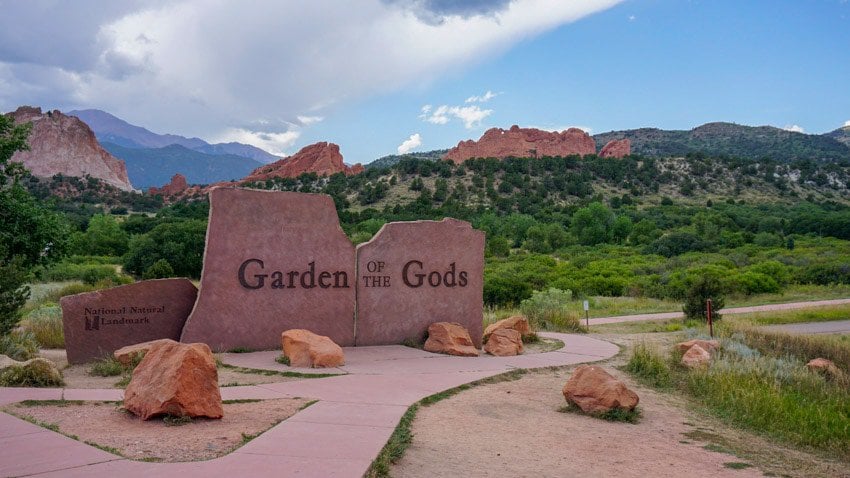
South-Central Colorado: Completely Littered with Gems
There are a lot of places outside of the I-70 corridor that are worth visiting. One of those would be to head southwest from Denver on Highway 285 instead of I-70.
This smaller highway first passes through Conifer (and the nearby town of Evergreen) where quite a few people live to escape the city life while staying close. Evergreen is a bit off of 285, but it’s a nice little town with a lake that’s excellent for kayakers and standup paddleboarders.
Continue west along 285 for an easier and usually less crowded drive compared to I-70. Eventually you’ll reach Kenosha Pass, which is a pretty mild pass that can be a great stop for a hike or a quick camping trip.
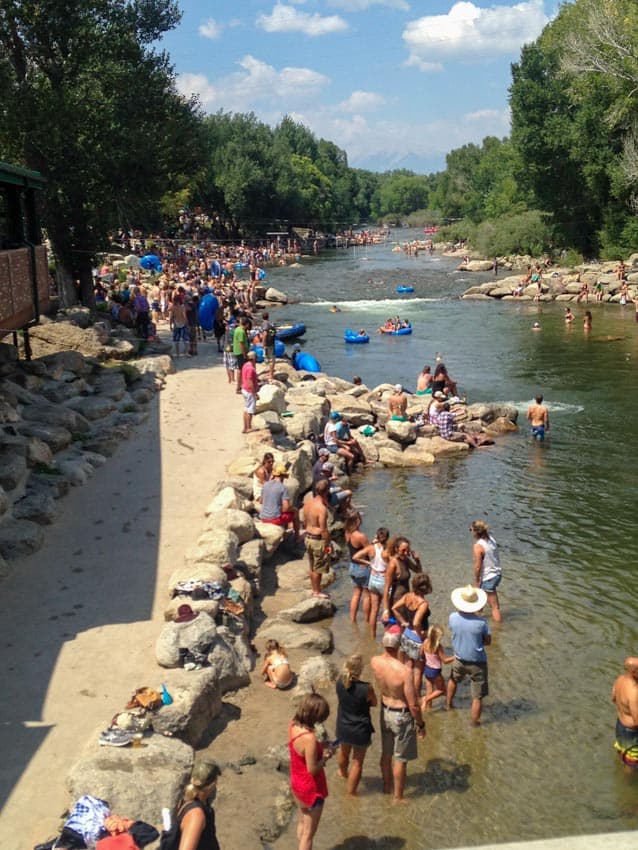
And then you’ll drop into Fairplay and South Park. If you want to get a feel for the old Wild West, then stop in the South Park City Museum, a historic 1880’s Gold Rush town that’s not a museum with 40 buildings.
Head north from Fairplay to get to Breckenridge using an alternative route. Most people head south toward Buena Vista instead of going north toward Breckenridge.
Oh yeah, and in case you thought your Spanish would come in handy with Colorado’s many Spanish-based names, forget about it. “The town’s name has been pronounced ‘BEW-na Vista’ instead of the Spanish ‘BWAY-na Vista’ ever since it was founded.” And they aren’t alone in the quirky pronunciation; Colorado is full of pronunciation nightmares.
Pronunciation issues aside, Buena Vista and the nearby Salida are great places to stop in for some food and a beer. Plus, they have a lot of great outdoor recreation (especially water-based activities) and camping areas nearby. In fact, there is a whole string of mountains that reach over 14,000 feet just to the west of these towns, heading all the way from Salida, through Buena Vista, and up toward Leadville.

In that area you can find Colorado’s highest peak, Mt. Elbert, topping out at 14,443 feet. And if you feel like a college throwback, then head to the Collegiate Peaks Wilderness Area, including Mt. Harvard, Mt. Yale, Mt. Princeton, and others, all over 14,000 feet high. If you have any interest in getting some “peak-bagging” done (summiting high mountain peaks), this is a great place to check out.
Head south from Salida to find Colorado’s second-best beach at the Great Sand Dunes National Park. We love this Park for many reasons: hiking up the massive dunes, the out-of-this-world views, and the excellent camping. nearby.
Read our post on camping near the Great Sand Dunes National Park for more information.
If you’re enjoying the mountains and don’t want to take a major detour to visit the dunes, then head west from Salida. You’ll find a fairly ugly part of Colorado near the town of Gunnison and the massive Blue Mesa Reservoir. Sorry if anyone finds this offensive, but I’ve never been a fan of this area. These are alright places to stop, but you won’t find giant mountain tops nor heavily forested areas in these parts.
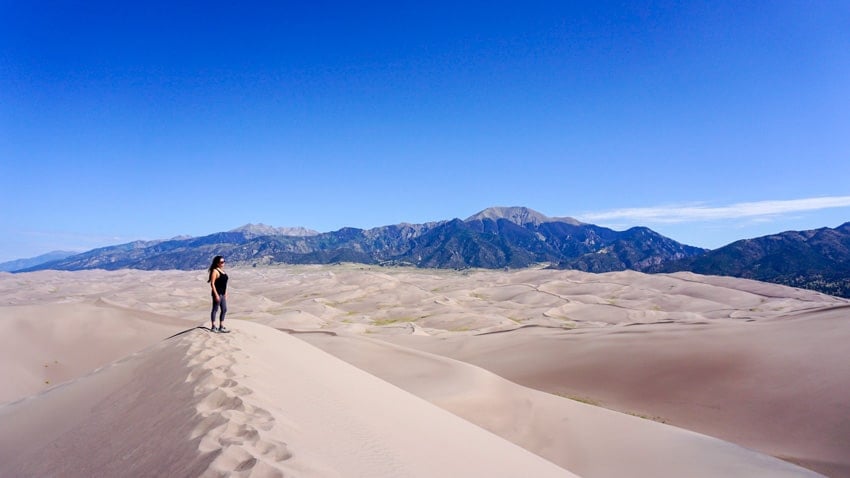
It’s worth going to Gunnison so that you can head north toward Crested Butte. This small mountain town is far off the beaten path and does its best to retain the small-town feel. A great place to check out if you want to see what a real Colorado mountain town is like, summer or winter.
About 20 miles north of Crested Butte (as the crow flies) is Aspen. And between those two resorts is one of Colorado’s most spectacular and well-known mountain peaks: Maroon Bells. If you’ve only seen one photo from Colorado, there’s a pretty decent chance it was taken here.
Unfortunately, some of the most accessible parts of Maroon Bells are dealing with serious overcrowding. If you plan to explore or camp/backpack in this area, make sure to plan ahead and see what sort of permits you might need.
Aspen is a very well known mountain town in Colorado, one that a lot of people will travel very far to get to (often in their own private jet). While it has a lot going on, its reputation is a bit pretentious. If you want a place in Colorado to see and be seen, then this is probably the best bet. It’s essentially Colorado’s Jackson Hole.

And finally, the last stop in south-central Colorado worth pointing out is the Black Canyon of the Gunnison National Park. This insanely deep canyon is located a bit southwest of Aspen and Crested Butte, and you can find some nice wineries along the way in Paonia if you’d like to stop by to grab a couple of bottles.
Black Canyon is seriously impressive. And it’s also seriously under-visited, which makes it a great stop in our opinion. The canyon’s walls top out at 2,722 feet tall, nearly a full 1,000 feet taller than the One World Trade Center building in New York, the United States’ tallest building. You could nearly stack two Willis Tower (Sears Tower for you traditionalists) inside of Black Canyon.
Find out more about visiting and camping at the Black Canyon of the Gunnison by reading our post.
While this doesn’t cover absolutely everything, you now have a much better idea of what south-central Colorado has to offer. Plenty of 14ers, a wide selection of smaller mountain towns, and some incredible National Parks tucked away, including the Great Sand Dunes and the Black Canyon.

Northern Colorado: Escaping the Rush
If there’s one area of Colorado, besides the Black Canyon, that has a reputation that’s not as good as it should be, I’d say that’s northern Colorado. A lot of it is off the beaten path as it takes more time to drive to, but there are plenty of gems to discover and explore.
As you head north on I-25 out of Denver, you’ll follow the front range of the Rocky Mountains, staying in the flatlands. After about an hour of a fairly uneventful drive through farmland, you’ll approach Fort Collins. This is a college town, where Colorado State University is located.
I’m a University of Colorado alum, so this is going to be a bit difficult for me to say…. But Fort Collins is a pretty great place. It is packed full of top-tier breweries (perfect for a day biking around), has a cute Main Street downtown area, and is located close to some excellent recreation areas.
If you head to northern Colorado, stop by Fort Collins and try to find a brewery to call your favorite. It will be a challenge to pick just one.


In the area between Fort Collins and Denver, you’ll find Loveland, Longmont, and a handful of Denver suburbs. Loveland and Longmont have their attractions and cute/quaint main strip, plus you can get to Rocky Mountain National Park by driving through either one.
Heading back toward the Fort Collins area, there’s one outdoor recreation stop that’s sure to be on most to-do lists: Poudre Canyon (pronounced pooh-dur – not joking). This magnificent canyon is where the Cache la Poudre River comes flowing out of the mountains and into Fort Collins. You can raft, float (head into town to float the lazy section), and hang out in many spots along the river.
Poudre Canyon is also a very popular camping destination. There are established campgrounds and tons of dispersed camping options. You’ll see plenty of trails for dirt bikes, ATVs, and OHV’s (off highway vehicles) of all types.
The area near Fort Collins is packed with reservoirs too. Horsetooth is one of the most popular and fun.

Head west and you’ll be in the Arapaho and Roosevelt National Forests. While parts of these forests don’t have the same extreme altitude you’ll find in other parts of Colorado (central and southwestern), these are still beautiful mountains thick with trees.
Red Feather Lakes is a great little camping spot that’s about 1.5 hours from Fort Collins and 2.5 hours from Denver. There are campgrounds on the main lake, Dowdy Lake, as well as many other campgrounds, dispersed camping areas, and hiking/backpacking trails in the area.
This area is full of large rock outcroppings that make for a lot of hiking fun. Head. Straight up some of them to get great views of the. Area. And there are some trail options that are great for beginner backpackers. Some of the short and relatively flat trails lead to semi-developed campgrounds with benches and fire pits.
To find our more, read our post on the best camping near Red Feather Lakes Colorado.
Steamboat is another area farther west in northern Colorado. It’s a bit difficult to get to, but it’s also a great little mountain town. Steamboat Lake State Park is a cool place to go for some water fun.

Southwestern Colorado: San Juan Mountains and the Million Dollar Highway
Alright, we’ve gone over the main thoroughfare I-70. Now let’s talk about arguably the most beautiful area of Colorado: the southwest region including the San Juan Mountains and the Million Dollar Highway.
How can you possibly go on a Colorado road trip without driving on a road nicknamed the million dollar highway?
Well, the problem is that it’s fairly far off the main highways and takes some serious time to get out to. But it’s worth it.

Most people will either approach from the east and hit the town of Durango first, or they’ll be coming from the north and hit Ouray. It honestly doesn’t matter which way you go, but we’ll start from the south in Durango.
Durango is the biggest town in the area, with a lively downtown section full of restaurants, bars, and shops. You’re going to notice that people love motorsports here. Big trucks, side-by-sides, ATV’s, dirt bikes, and motorcycles will be zipping around town.
There are also many great tours near Durango, including some amazing zipline Durango adventures and Durango Jeep tours and rentals.

If you drive just west of Durango, you’ll shortly hit Mesa Verde National Park. This Park features magnificent cliff dwellings, dating back to some of America’s earliest known settlements. The Park is giant and has a ton of tour options, some quite adventurous ones that include high climbs over wooden ladders and steep cliffsides.
Check out our post on camping Near Mesa Verde National Park to figure out where to crash.
After Mesa Verde and Durango, head north on Highway 550. This is the million dollar highway and you’ll soon see why. The mountains are downright awe-inspiring. The plentiful mineral deposits have slightly oxidized, resulting in magnificent layers of red, orange, and yellow all over the place. The trees and mountains are some of the biggest in the state.
Eventually you’ll drop down into the sleepy little town of Silverton. With merely one paved road cutting through town, this is a post-card style view. Stop in the Grand Imperial Hotel for a quick drink at the bar or head down to one of the many restaurants nearby. A lot of people love taking railroad tours through this area too.


Keep heading north and you’ll find the town of Ouray, best known for the many hot springs in town. We loved the more adult-oriented Orvis Hot Springs (clothing optional) located closer to Ridgway, but there are plenty of hot springs and even hotels with hot springs in Ouray. A great place to come after hiking in the nearby mountains.
After Ouray, you’ll hit the town of Ridgway, which is a fine stop and a bit larger of a town, but I suggest you hang a left and go west toward Telluride.
Telluride is an epic little mountain town that has kept its non-touristy and laid-back vibes in full force. The rooftop patio at the Last Dollar Saloon is a nice place to spend the afternoon, but don’t miss checking out the resort during your Colorado road trip as well.
This post doesn’t focus on all of the outdoor recreation options in each area, but Yankee Boy Basin and Uncompahgre Wilderness are two downright amazing places to go if you’re willing to get off the highway and head into the forests. You can hike plenty of mountains in this area and you won’t forget it.
And that basically wraps up the San Juan Mountain area of Colorado.



4 Colorado Road Trip Itineraries
There are a million ways one could explore on their Colorado road trip. Denver acts as the main hub for most people: those flying into DIA and those living in the greater Denver area, so the sample Colorado road trip itineraries ideas are based on coming in and out from there.
Here are some sample ideas for a Colorado Road Trip:
Central Colorado Circle (1-week loop):
- Day 1: Starting from Denver, head southwest toward Deckers or Manitou Springs. Spend the night camping in the wilderness at a lower elevation.
- Day 2: Spend the morning exploring the Garden of the Gods near Colorado Springs, then the Royal Gorge near Cañon City, and drive to the Great Sand Dunes National Park to camp.
- Day 3: Spend the day hiking in the dunes.
- Day 4: Drive north to Salida, Buena Vista, and the Collegiate Peaks Wilderness Area. Camp at the base of mountains 14,000 feet tall.
- Day 5: Head north through Aspen for the long, adventurous route (with Maroon Bells and an upscale town) or go north through Leadville for more camping deep in the Colorado mountains.
- Day 6: Enjoy the Leadville or Aspen area.
- Day 7: Head back to Denver (or home), stopping at Breckenridge or your favorite place in Summit County on the way back.

Front Range Line (1-week loop):
- Day. 1: From Denver, head northwest to Boulder or go straight through to Rocky Mountain National Park.
- Day 2: Enjoy Boulder, Estes Park, and Rocky Mountain National Park.
- Day 3: Head north to the Fort Collins area. Stay in the town or go camping in Poudre Canyon.
- Day 4: Explore the area, including Horsetooth Reservoir, downtown Fort Collins, and floating on the Poudre River.
- Day 5: To stay nearby with minimal driving, go to Red Feather Lakes to camp. If you’re up for a longer drive, go toward Winter Park or Steamboat.
- Day 6: Adventure around the destination of your choice (or head off to the next one).
- Day 7: Drive back to Denver (or home), with enough time to stop for a beer at a new brewery in the River North neighborhood.

Southwestern Adventures (1-week loop):
- Day 1: Leave Denver early and drive to Mesa Verde National Park. That’s just about the longest drive you can have within Colorado.
- Day 2: Explore MVNP and camp at the park or nearby.
- Day 3: Drive back through Durango, stop for lunch, then head north to Silverton. Camp somewhere in the area around Silverton or stay at a hot springs hotel in Ouray or Ridgway.
- Day 4: Drive to Telluride and enjoy the calm vibes.
- Day 5: Either stay in Telluride or head back east to find another area to camp in.
- Day 6: Head to the Black Canyon of the Gunnison River National Park to explore and camp nearby.
- Day 7: Head back home, making time for a good Colorado pizza in a small mountain town along your route back.

The Big Kahuna (3-week loop):
- Days 1-2: Go south from Denver and camp near Manitou Springs or Deckers. Enjoy Garden of the Gods, Manitou Springs, and the Broadmoor Hotel.
- Days 3-4: Head into the mountains, going through the Royal Gorge and stopping for a rafting trip or to go to the adventure park, and ending up at the Great Sand Dunes National Park.
- Days 5-6: After exploring GSDNP, head east to Buena Vista, Salida, and Leadville for some mountain biking, hiking fun, and great camping.
- Days 7-8: Continue west to Crested Butte, then on to the Black Canyon of the Gunnison National Park. Stay a night in each.
- Days 9-10: Head south through Ouray (stop for hot springs), into Silverton (stop for OHV rentals), and into Durango or go all the way to Mesa Verde National Park.
- Days 11-12: Make the long drive all the way back to Summit County. Stop in Breckenridge to have some city fun or camp in the many National Forests nearby.
- Days 13-14: Drive up to Winter Park area for some great camping, hiking, biking, and boating.
- Days 15-16: Head up north and either go to the Steamboat area, Red Feather Lakes, or the Poudre Canyon.
- Days 17- 18: Make your way back south, but go through Rocky Mountain National Park, then camp in the area or toward Nederland, or go back to Boulder.
- Days 19-20: Go for a hike in the front range, check out Idaho Springs, Golden, Denver, or whatever nearby area you’d like.
- Day 21: Head home.
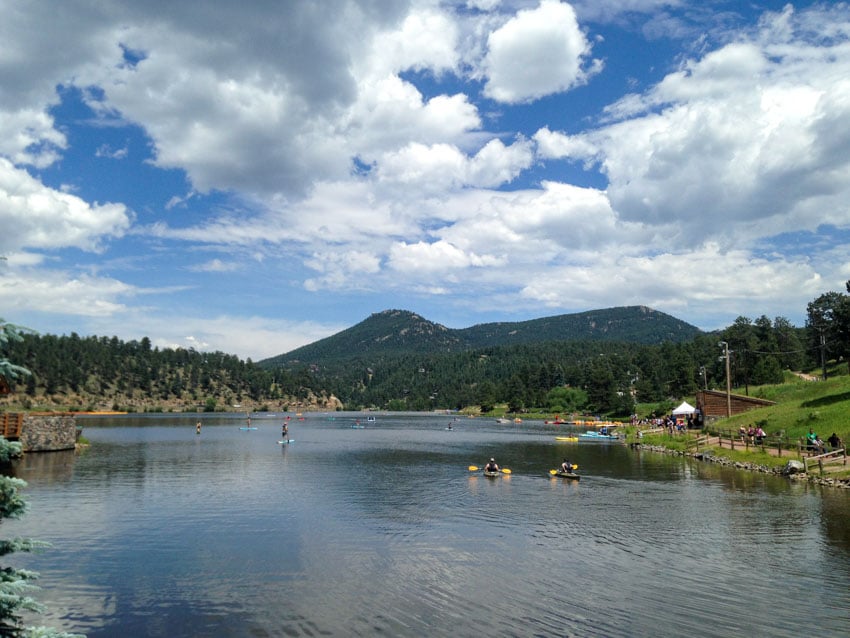
Once you’re done in Colorado, head west to Utah to be blown away by the five great National Parks there; go north to Wyoming for Yellowstone Park and Jackson Hole fun; go south to New Mexico to explore Taos or the Carlsbad Caverns.
There’s certainly no shortage of places to go before or after your road trip through Colorado.

Colorado Road Trip: Whatever You Want
What’s the best Colorado road trip? That’s up to you. But at least now you have the knowledge to put together your own itinerary or just use one of ours!
Remember that I-70 cuts through the entire state and is the main traffic artery. You can start most adventures in Denver, but going to southwestern Colorado will take some time.
Select from amazing National Parks including Rocky Mountain, Great Sand Dunes, Black Canyon of the Gunnison, and Mesa Verde. Or explore your own path deep in one fo the many National Forests and Wilderness Areas.
Squeeze in a hike up a 14er, a float or rafting trip down a rushing river, and a day of riding mountain bikes or ATV. Most importantly, enjoy the great outdoors and all this incredible state has to offer.
Is there a part of Colorado that you want to know more about or have something you want to share? Leave a comment below to add your thoughts.

